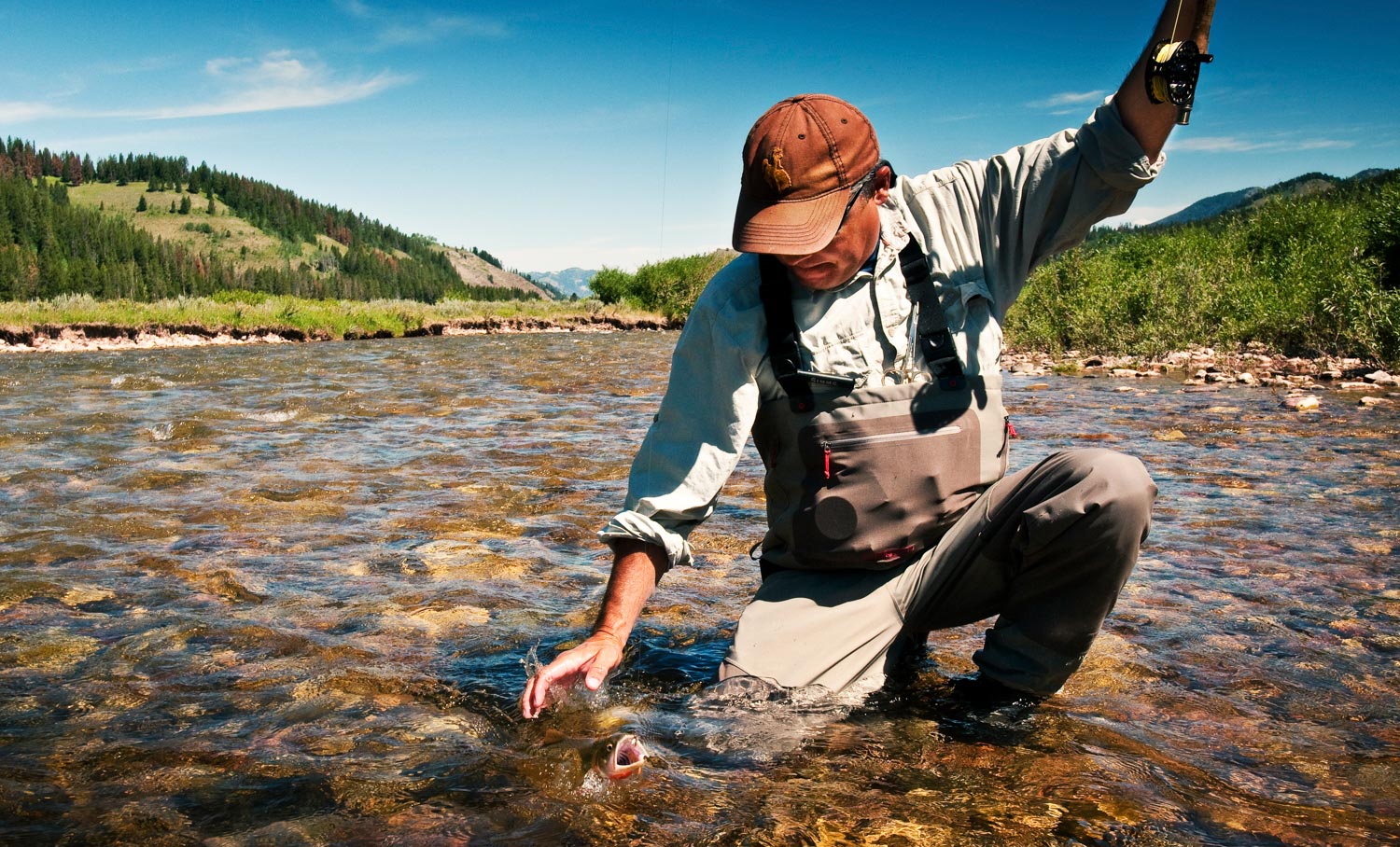By Dan Frasier
For all you flats guys and bank fishermen out there.
Landing, unhooking, wrangling, getting a picture, and releasing a fish can all turn into a giant goat rodeo. Nothing makes it worse than having a bare hook connected to a nearly invisible line which is tied to your very expensive rod; flailing about.
One trick I love is to use my forceps to unhook the fish, and then lock them onto the hook of my fly and set it aside. The weight of the forceps means the fly won’t move or blow around or anything. If the leader gets wrapped on the net or the fish or me the fly won’t slide up and hook me. When it’s all over, my line won’t be wrapped in any bankside brush and my fly won’t be stuck in any tree limbs.
Basically, it’s like having another hand that is designated to hold your fly out of the way while you deal with all of the rest of the melee. When you’re done you know exactly where your fly (and therefore line) is and you can get back to fishing easily without worrying about tangles of damaged leaders.
Dan Frasier Gink & Gasoline www.ginkandgasoline.com hookups@ginkandgasoline.com Sign Up For Our Weekly Newsletter!


Great idea! It’s so easy to get distracted in properly handling and releasing the fish that you don’t pay any attention to the location of the fly. The hook invariably gets stuck on something. Thanks for the tip.
Yes this is a good-sense tip. A look hook is a safety hazard, as well as a nuisance waiting to bother. Thanks for the reminder, Dan. – AOF
Try this tip:
I drill a small hole about 1/8″ from the tip of my forceps – dead center on the jaw split. I grab the fly in the hole and find it does much less damage to the fly as there is just a little wiggle room instead of a crushing force. When fly is removed, lock hemostats and the fly will remain comfortable and secure.
I’ll have to give this a try! Thanks for the pointer
Good idea, but bear in mind the hemostats teeth may leave depressions in the hook that become fracture critical areas. I like the idea of drilling the small hole, mentioned in the comments, as that removes the uneven clamping force that can cause the weakened him.
Hi Guys,
Most, if not all of my fly fishing these days is undertaken using crushed barbs or barb-less hooks. On occasions where a barbed hook is employed (Cuda etc) long lockable forceps are especially useful. Here in the UK we also use a little dissgorger which you can buy or make yourelf. Take an unlined rod tip ring, fix it to a pencil length piece of light material (a small section of an old fishing rod),then carefully grind or file a small gap in the ring allowing the ring to pass over your tippet material,gently push the ring down to the bend of the hook and with the leader taught a tiny push down will release the hook hold, then the hook can be with drawn still on the ring and away from danger. I will say that some bulky fly dressings present more of a challenge and one needs to employ a larger ring. Some of us have several dissgorger sizes dependent on the type of flies we are likely to use.
Ten of us Brits are off to Crooked in two weeks,can`t wait.Tight lines to all.
JV
That’s an awesome idea! I do the same thing when I’m tying a new a fly on . . . not sure why I didn’t think of doing this when landing a fish.